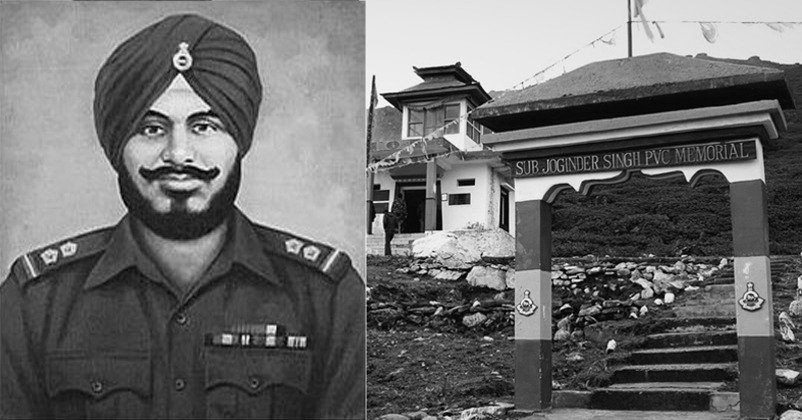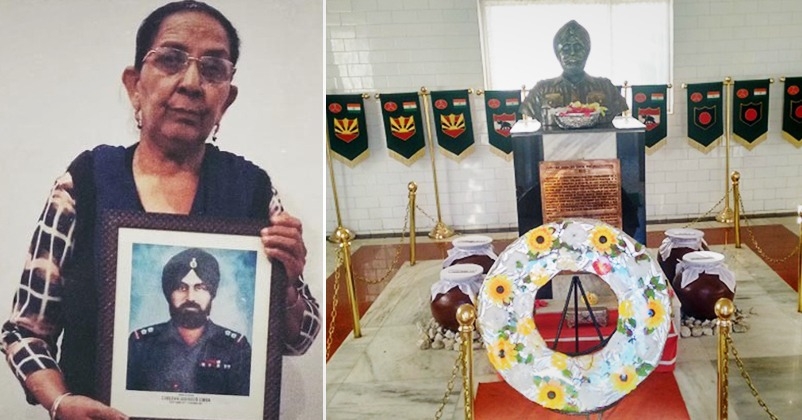Remembering the brave warriors of 1962 India-China War - PVC Sub Joginder Singh, 1 Sikh
| 28-Sep-2020 |

With the independence of India and the formation of the People's Republic of China (PRC) in the year 1949, one of the policies of the Indian government was that of maintaining cordial relations with China. In 1954, China and India even concluded the Five Principles of Peaceful Coexistence, and it was at this time when former Prime Minister of India, Jawaharlal Nehru promoted the slogan "Hindi-Chini bhai-bhai". India never suspected that Chinese could ever violate any of the principles, but China not only conspired an attack without letting Indian Army prepare enough to retaliate but also launched an attack first. Throughout the summer of 1962, various conflicts and military incidents between India and China flared up, giving way to what famously came to be known as the Sino-India War of 1962.
The Battle at BumLa
On 8 September 1962, Prime Minister Nehru was in London for the Commonwealth Prime Minister's Conference. On 9 September, at a meeting held in India by the Defence Minister, Krishna Menon, a decision was taken to evict the Chinese south of the Thagla Ridge. Nehru was informed of the developments and he endorsed the decision. 7 Infantry Brigade was ordered to move to the Namka Chu—an area which was dominated by the enemy and tactically unsound. The Indian Press unfortunately blew up these developments with sensational headlines that projected a military offensive that our forces were incapable of implementing.
The Chinese, now fully aware of the confusion that prevailed in India, and the advantageous situation they were placed in, attacked the ill-prepared and tactically unsound Indian position at Namka Chu and overran it on 20 October 1962 with overwhelming strength. The Indian troops fought bravely but most of them were martyred fighting with obsolete weapons, inadequate ammunition, and a virtually non-existent line of communication.

Subedar Joginder Singh's Daughter with his portrait
In the highest traditions of chivalry, Subedar Joginder Singh
Soon after the attack destroyed 7 Infantry Brigade at Namka Chu, the Chinese advanced towards Tawang. A divisional force advanced across Bumla held by only a company of Sikh. Hopelessly outnumbered, the company faced wave on wave of Chinese soldiers. In the highest traditions of Chivalry, the brave soldiers of 1 Sikh led by Subedar Joginder Singh faced the Chinese hordes with unwavering determination. Having decimated the initial Chinese assault the platoon had sustained heavy casualties and was reduced to half its strength. Subedar Joginder Singh was wounded in the thigh but refused to be evacuated. When ammunition ran out, the remnants of this ragged platoon fixed bayonets, and unmindful of certain death, charged headlong into the advancing lines of Chinese attackers shouting the famous Sikh war cry “Bole So Nihal, Sat Sri Akal”.
The Chinese assaulting lines wavered at the sight of these brave, bleeding, bearded warriors and many fell to the thrust of their flashing bayonets, but the overwhelming strength and superior weapons of the Chinese soldiers were able to absorb the last fearless charge of Subedar Joginder Singh and his gallant band of determined Sikhs. Most of them were martyred or badly wounded. Subedar Joginder Singh was mortally wounded and attained martyrdom in Chinese captivity. Neither his body nor his remains were ever handed over.
“Citation” – Subedar Joginder Singh 1 SIKH (JC 1547)
Subedar Joginder Singh was the commander of a platoon of the Sikh Regiment holding a defensive position at a ridge near Tongpen La in NEFA. At 0530 hours on 23 October 1962, the Chinese opened a very heavy attack on the Bumla axis with the intention of breaking through to Towang. The leading battalion of the enemy attacked the ridge in three waves, each about 200 strong. Subedar Joginder Singh and his men mowed down the first wave, and the enemy was temporarily halted by the heavy losses it suffered. Within a few minutes, a second wave came over and was dealt with similarly. But the platoon had, by then, lost half its men.

Sub Kala Singh who fought with Sub Joginder Singh in the battle of Bum La in 1962
Subedar Joginder Singh was wounded in the thigh but refused to be evacuated. Under his inspiring leadership the platoon stubbornly held its ground and would not withdraw.
Meanwhile the position was attacked for the third time. Subedar Joginder Singh himself manned a light machine-gun and shot down a number of the enemies. The Chinese however continued to advance despite heavy losses. When the situation became untenable Subedar Joginder Singh and the few men that were left in the position fixed bayonets and charged the advancing Chinese, bayonetting a number of them before he and his comrades were overpowered. Throughout this action, Subedar Joginder Singh displayed devotion to duty, inspiring leadership and bravery of the highest order.
How a Sikh from small village earned it all, from an identity to an exceptional name in the noble service
Joginder Singh was born on 28 September 1921 and brought up at village Mahakalan near Moga in the Punjab. He did not come from a wealthy family and could not finish his studies in school due to financial reasons. He felt that the Army would give him a sense of identity and a purpose and was recruited into the Sikh Regiment. However, he was very keen on education and soon passed his Army education examinations and became a Unit Education Instructor. His drill and turnout were of an exceptional standard, as was his character.
He married in the early fifties and had a son and two daughters. A thoughtful and considerate person, he was loved and respected both at home and in his battalion. He did his duty to defend his country and the honour of his regiment to his last breath. His charge with the remnants of his platoon against the overwhelming hordes of Chinese attackers at Bumla is in keeping with his character and all that is characteristic of military chivalry and courage. In the face of overwhelming odds, he pushed aside the fear of death and thoughts of his family. What was important to him was to defend India's frontiers at all cost. So, rallying his men, he led them in a last desperate attempt to rid his country of the invading enemy and perished in the attempt. His elder daughter died on hearing the news of her father's martyrdom. His son manages the land given to Joginder Singh's family by the Punjab government.